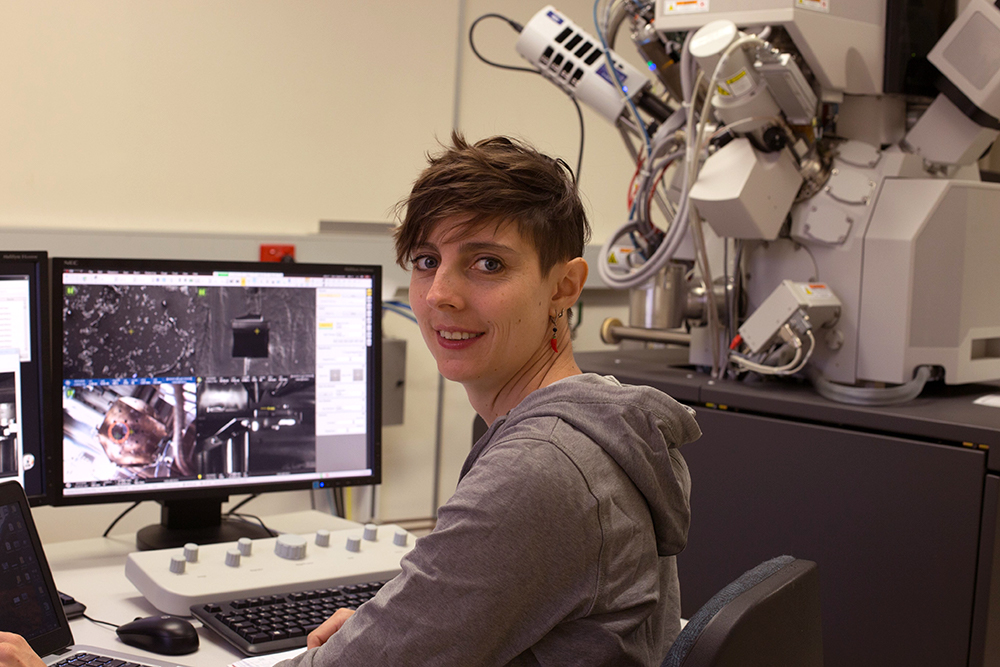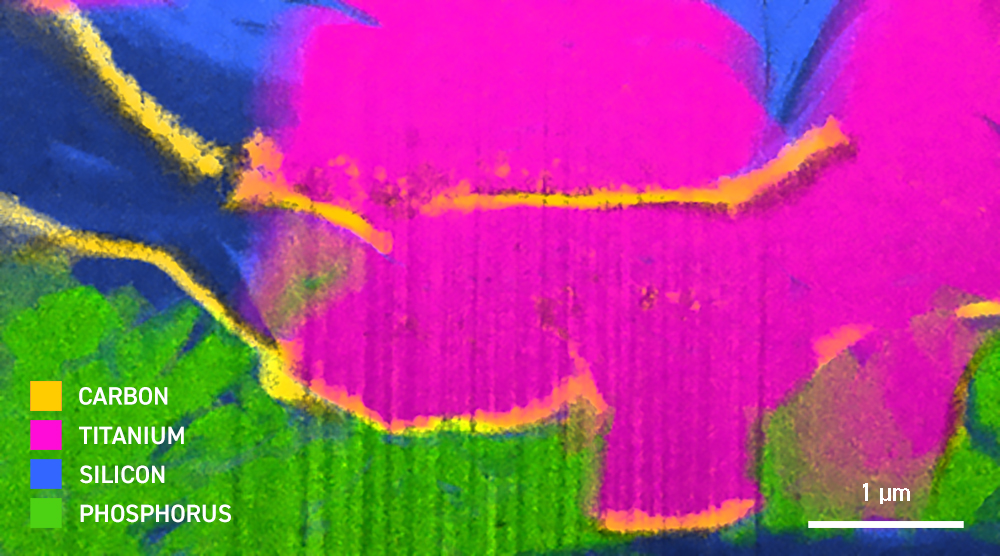Fossilised cells where cell wall material and intra-cellular inclusions are preserved are extremely rare in Precambrian rocks. This period encapsulates the first four billion years of life on Earth and is crucial for understanding how life on Earth evolved into the multicellular organisms we see today.
A team of researchers lead by Dr David Wacey and Ms Eva Sirantoine have been investigating the grey phosphate nodules that litter the sandstone outcroppings of northwest Scotland’s Cailleach Head Formation, part of the Torridon Group, which are rich in fossilised cells from this period.
The team examined the phosphate nodules using scanning transmission, and scanning electron, microscopy combined with elemental analysis at our University of Western Australia Facility, the Centre for Microscopy, Characterisation and Analysis (CMCA). These techniques revealed the structure and chemical composition of the microfossils down to sub-cellular detail. In doing this, they found exceptional intra-cellular details preserved in the mineral anatase, published in GeoBiology, and also in the minerals monazite and xenotime, published in Scientific Reports. In both cases it is the first time these minerals have been observed preserving subcellular detail in fossils. These discoveries open up new minerals for researchers to target in the search for Precambrian microfossils, to better understand the origins of life on earth.

Eva Sirantoine using the scanning electron microscope at the Centre for Microscopy, Characterisation and Analysis, University of Western Australia
Anatase is an optically transparent form of titanium dioxide. The team observed anatase encasing cell walls and some internal cell structures, where carbon, nitrogen, oxygen and sulfur were preserved, confirming it is original organic cellular material. Evidence pointed to the anatase forming soon after death of the cells, resulting in fantastic preservation of intracellular and cell wall materials.

Transmission electron microscope image, with elemental mapping (EDS), of a cell wall (yellow) entombed in anatase.
Monazite and xenotime are rare earth element (REE) phosphate minerals. Both eukaryotic algae and cyanobacteria living today take up and sequester REEs and phosphate in the form of polyphosphate granules. Hence, polyphosphate granules, which are quite widespread in unicellular organisms today, could have been a ready intracellular source of both REEs and phosphate during early phases of fossilisation. The location of the minerals inside fossilized cells suggests that the REEs and phosphate were actively taken up by the living cells to form polyphosphate granules, forming monazite and xenotime, which preserved the internal cell structures.
Ms Sirantoine says microfossils like these provide us with a window into the distant past. “Most fossils are not as good, so it’s like having a bad camera with a bad lens: You get a blurred image so you can’t really tell what’s in the picture. But when you get very nice fossil deposits like this one, you have a much sharper picture. Studying this well-preserved deposit gives you a better picture of what the diversity was like.”
Photograph of Eva Sirantoine in the field in Scotland by Dr David Wacey.
February 25, 2021